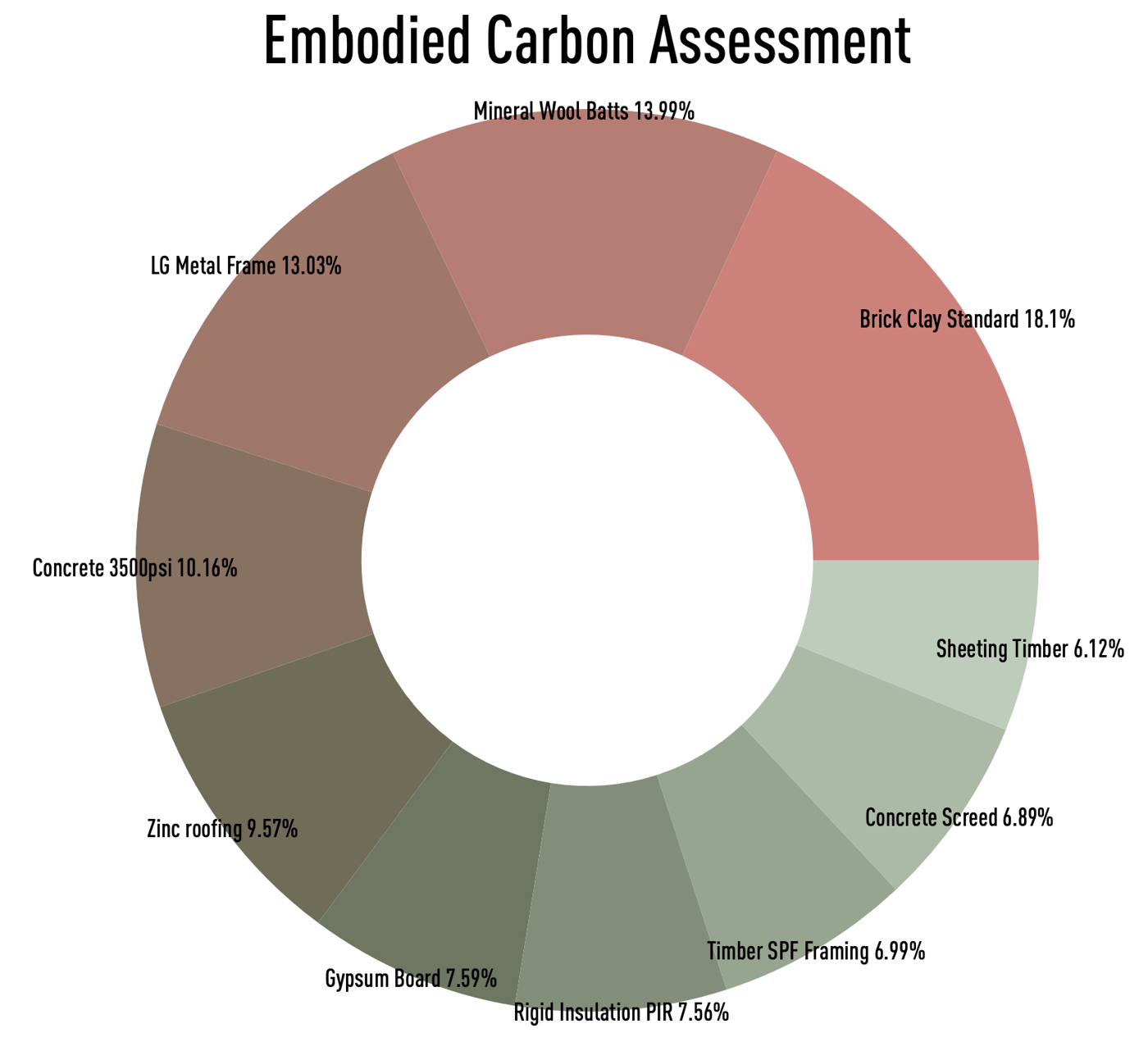Calculating Embodied Carbon

Governments and legislative bodies are targeting net zero carbon emissions in building operation and construction. Read more about sustainable architecture on AIA’s 2030 Commitment webpage.
For architects, targeting net zero carbon means that analyzing projects’ environmental footprints is more important now than ever.
To reach true net zero carbon emissions, you’ll need a way to calculate embodied carbon throughout the entire lifecycle of a project.
That’s where the Vectorworks Embodied Carbon Calculator (VECC) comes in — it's a custom worksheet that's pre-formatted to help calculate embodied carbon levels of a project. This blog will offer some details about the worksheet and provide you a link to download the file to use yourself.
What Is Embodied Carbon?
Embodied carbon refers to the carbon emitted through the building’s materials and construction processes. Embodied carbon is responsible for about 11% of global CO2 emissions, and that number is expected to continue to rise.
Why Is Calculating Embodied Carbon So Important?
Embodied carbon is different from operational carbon, which concerns in-use operations like heating, cooling, lighting, and ventilation. The key here is that operational carbon can be reduced after a building is constructed; embodied carbon, on the other hand, is locked once the structure is built. It’s “embodied” in the building itself.
It’s therefore crucial to be thinking about net zero benchmarks from the very start of the design process, as you get one shot at delivering a project with low embodied carbon. There’s no making up for it after the fact.
The Vectorworks Embodied Carbon Calculator (VECC)
Designers using Vectorworks Architect will be pleased to know that there’s a tool created specifically for this purpose: the Vectorworks Embodied Carbon Calculator, or “VECC.”
The tool is a pre-formatted worksheet that has built-in formulas to calculate material embodied carbon emissions based on your inputs.

The VECC is organized into columns corresponding to stages of the project’s lifecycle:
- Product Stage – for tracking embodied carbon emitted from supply, transport, and manufacturing of selected raw materials.
- Transportation Stage – for tracking carbon emitted from the transportation of products from the manufacturing plant to the project site.
- Construction Stage – for tracking carbon emitted from any on- or off-site construction-related activities.
- Replacement Stage – for tracking carbon emissions associated with anticipated replacement of building components.
- Deconstruction & Demolition Stage – for tracking carbon emissions arising from any on- or off-site deconstruction and demolition activities.
- Recovery/Recycling Stage – for tracking carbon emissions associated with treatment and processing of materials and components that’re intended to be recovered and reused after the end of the built asset’s lifecycle.
- Disposal Stage – for tracking carbon emissions arising from disposal of materials and components not expected to be recovered and repurposed, but incinerated or disposed of at a landfill.
Using Marionette, Vectorworks' algorithms-aided design tool, you can extract data from the VECC to visualize it into a chart. This chart is connected to the data sheet above.

With the VECC and Energos — which is used to calculate energy demand — you’re well set up to complete a holistic carbon emissions assessment.
Colin Davis of Studio Partington, one of the earliest adopters of the VECC, said:
"Studio Partington is passionate about designing buildings that take a conscious effort to minimize their impacts on the environment. The awareness of embodied carbon and the contribution it makes to a buildings overall carbon footprint is a new field to all designers. The VECC gives us the opportunity, from the earliest stages of a project, to quickly understand and analyze the amount of material and likely embodied carbon impacts of our proposals. This can feedback into the design process to lead to better and more responsible solutions."
Reducing the Embodied Carbon of Your Building Project
Here are a few ways to reduce a project’s embodied carbon levels.
- Re-use buildings instead of constructing new ones. Construction processes have a high carbon footprint. Renovating what’s already there instead of tearing everything down and starting over can greatly reduce a project’s embodied carbon levels. A renovation project can let you be just as creative as with a ground-up build.
As is the motto of 2021 Pritzker Prize -winning firm Lacaton & Vassal: “Never demolish, never remove — always add, transform, or reuse."
- Limit use of high-carbon materials like plastic, concrete, and metal. Wood is growing more and more popular as a building material due to its lower embodied carbon levels.
-
Use recycled materials. Especially for high-carbon materials like aluminum, recycling can greatly reduce a project’s embodied carbon, because the carbon required to manufacture those materials has already been accounted for.
-
Source materials locally. Instead of having materials shipped overseas, for example, look to source from your immediate area. This reduces carbon emissions from lengthy transportations.
- Create modular systems where possible. Modular structures are easier and faster to construct, reducing carbon emissions from the construction process.
Click below for more information, including a link to download the VECC file as well as a user guide.

